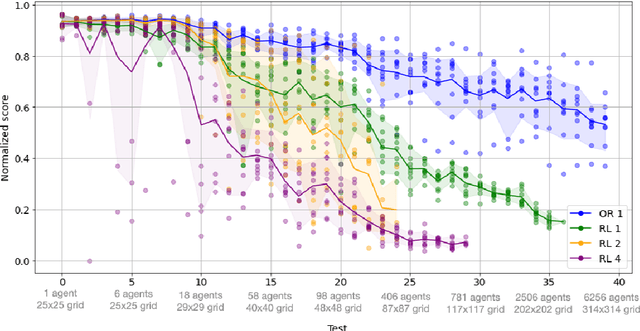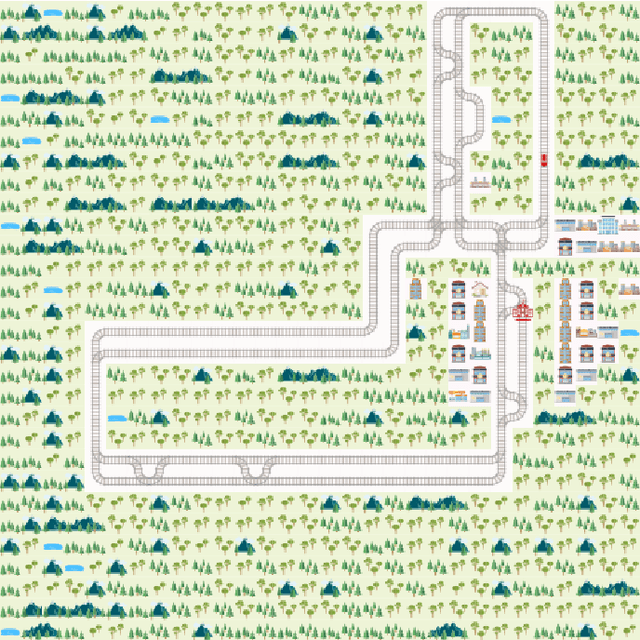Nilabha Bhattacharya
Flatland Competition 2020: MAPF and MARL for Efficient Train Coordination on a Grid World
Mar 30, 2021



Abstract:The Flatland competition aimed at finding novel approaches to solve the vehicle re-scheduling problem (VRSP). The VRSP is concerned with scheduling trips in traffic networks and the re-scheduling of vehicles when disruptions occur, for example the breakdown of a vehicle. While solving the VRSP in various settings has been an active area in operations research (OR) for decades, the ever-growing complexity of modern railway networks makes dynamic real-time scheduling of traffic virtually impossible. Recently, multi-agent reinforcement learning (MARL) has successfully tackled challenging tasks where many agents need to be coordinated, such as multiplayer video games. However, the coordination of hundreds of agents in a real-life setting like a railway network remains challenging and the Flatland environment used for the competition models these real-world properties in a simplified manner. Submissions had to bring as many trains (agents) to their target stations in as little time as possible. While the best submissions were in the OR category, participants found many promising MARL approaches. Using both centralized and decentralized learning based approaches, top submissions used graph representations of the environment to construct tree-based observations. Further, different coordination mechanisms were implemented, such as communication and prioritization between agents. This paper presents the competition setup, four outstanding solutions to the competition, and a cross-comparison between them.
Flatland-RL : Multi-Agent Reinforcement Learning on Trains
Dec 11, 2020



Abstract:Efficient automated scheduling of trains remains a major challenge for modern railway systems. The underlying vehicle rescheduling problem (VRSP) has been a major focus of Operations Research (OR) since decades. Traditional approaches use complex simulators to study VRSP, where experimenting with a broad range of novel ideas is time consuming and has a huge computational overhead. In this paper, we introduce a two-dimensional simplified grid environment called "Flatland" that allows for faster experimentation. Flatland does not only reduce the complexity of the full physical simulation, but also provides an easy-to-use interface to test novel approaches for the VRSP, such as Reinforcement Learning (RL) and Imitation Learning (IL). In order to probe the potential of Machine Learning (ML) research on Flatland, we (1) ran a first series of RL and IL experiments and (2) design and executed a public Benchmark at NeurIPS 2020 to engage a large community of researchers to work on this problem. Our own experimental results, on the one hand, demonstrate that ML has potential in solving the VRSP on Flatland. On the other hand, we identify key topics that need further research. Overall, the Flatland environment has proven to be a robust and valuable framework to investigate the VRSP for railway networks. Our experiments provide a good starting point for further research and for the participants of the NeurIPS 2020 Flatland Benchmark. All of these efforts together have the potential to have a substantial impact on shaping the mobility of the future.
 Add to Chrome
Add to Chrome Add to Firefox
Add to Firefox Add to Edge
Add to Edge